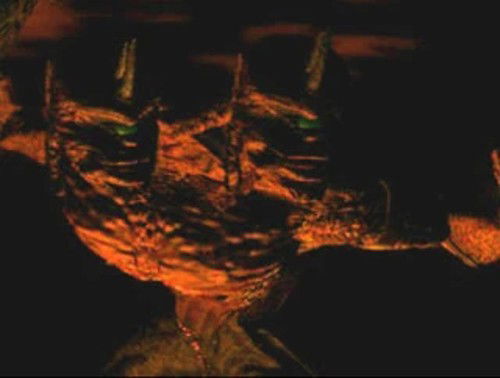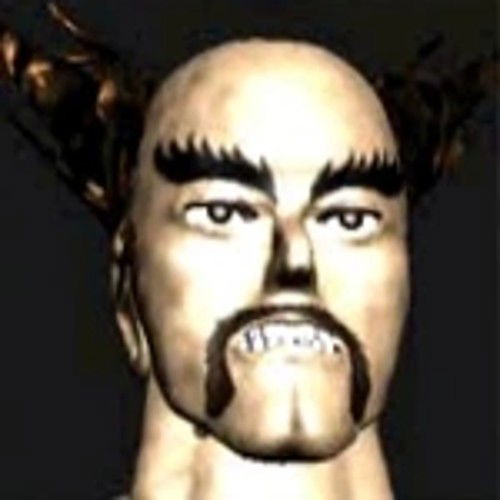Easter eggs and secrets are practically mandatory elements in today's games, often carrying importance beyond mere reference or curiosity.
In the case of fighting games, the most well-known Easter eggs are the famous secret characters, a feature that serves not only to reward players for completing certain challenges or conditions but also to enhance gameplay by adding new elements to explore.
Mortal Kombat
The first title to introduce this element into video games was Mortal Kombat, from 1992, featuring the character Reptile. To face him, the player had to fulfill a series of complex conditions, such as winning two matches with a flawless victory without using defense, being in a specific scenario, and waiting for a certain event to occur in that scenario. Only after completing all the steps the game would reveal Reptile, a ninja who was basically a fusion between Scorpion and Sub-Zero.

Keeping with tradition, Mortal Kombat II features not just one, but three secret characters: Smoke, Noob Saibot, and Jade, each with their own unlock requirements and this time with a few more features than just a skin of another character.
Noob Saibot's case is even more interesting, as his name is an anagram of the game's creators, Ed Boon and John Tobias. If you look at each of their surnames and read them backward, you get the name Noob Saibot.
Another very famous secret character in the franchise is Ermac, who made his official debut in MK Ultimate, but who already existed in rumors of a secret character in the first game. Due to an Error Macro (ErMac) in a version of the original MK, some characters changed their colors, which caused players to believe that the red ninja was a secret character. The developers later confirmed this rumor by creating Ermac.

Street Fighter
There's much debate about who actually introduced the first secret character in fighting game history. This is because, in 1994, Super Street Fighter II Turbo was released, introducing the first secret playable character in history, Akuma.

To face Akuma, the player had to fulfill a series of conditions that culminated in the original final boss, M. Bison, being defeated by a mysterious character who fought like the protagonists Ryu and Ken, but was much faster and could teleport and use the Hadouken mid-air.
Akuma could be played using a code, which differentiates him from Reptile in Mortal Kombat. However, MK was released first and, therefore, is responsible for introducing this element, with Street Fighter perfecting the use of Secret Characters.
Other Games
Killer Instinct is another classic from the '90s in the fighting genre, featuring striking characters in a dark atmosphere reminiscent of Mortal Kombat, but which manages to achieve its own identity. In this title, the final boss Eyedol is also a secret character that can be unlocked through a code that requires a specific character to be selected, with some minor differences depending on the platform.

In Tekken, the use of secret characters began to become much more widespread, with the first title introducing several unlockable characters, most of them skins for playable fighters, except for Heihachi, who is a unique character.
However, while the alternate versions of the characters aren't exactly new characters, some of them, like Devil Kazuya, required high-level requirements, such as beating the game with all the characters—something that, considering the difficulty level of the original games in the franchise, was quite difficult to accomplish.

Some games also featured region-exclusive characters. This was the case with SEGA's Fighting Vipers, whose Japanese version featured several Pepsi advertisements, including an exclusive unlockable character, the brand's mascot, Pepsiman. The character was cut from the American version of the game and became exclusive to the Japanese version.

This character has his own platforming game, where you must collect Pepsi cans while overcoming challenges and obstacles.
Another beloved franchise in this genre is The King of Fighters. KOF offers some great examples of secret characters.
In KOF 97, when using Team Japan or using Kyo Kusanagi in single-player mode, it’s possible to enable the character Iori Yagami as a secret final boss, even though he’s one of the playable characters, but the best representation of this mechanic in the series are the Orochi versions of some characters, such as Iori and Leona in KOF 97. These versions are very different from the originals, both in fighting style and design, and could be unlocked by holding the start button when selecting the normal versions of these characters.

In Dragon Ball GT: Final Bout, a PlayStation classic, we can play with the most beloved characters from the franchise created by the legend Akira Toriyama, as well as their various transformations. However, the Super Saiyan 4 version of Goku could only be unlocked by using a code or beating the game by fulfilling certain conditions. Considering the popularity of this transformation, unlocking this character was something all players wanted.

In Naruto Shippuden: Ultimate Ninja 5 on the PlayStation 2, two characters always gave players a lot of trouble to become playable, requiring them to beat the entire story mode and the two additional story modes. This was quite time-consuming, as the story mode was a kind of RPG, unlike the battle mode, which was the traditional multiplayer mode focused on fighting.
Sasuke as a child and Minato, the Fourth Hokage, were the last two characters to be unlocked in the game, but unlocking these two was so difficult and time-consuming that both can be classified as secrets in this game.

Influences
Fighting games today are adopting a much greater use of alternate character versions and crossover characters, rather than the old secret character model. Much of this is because modern fighting games are much more competitive and widely played online, which requires more refined character balancing, something that prevents developers from introducing super-powered, hard-to-unlock characters as was done in the past.
Still, the impact of this element on the industry is notable, not only in fighting games but also in other genres. Several games that came out after the 90s used the secret character element as a reward for players, and it all started with Reptile in Mortal Kombat, showing the importance of this element in the gaming universe.
Conclusion
Reptile and Akuma kicked off something that became a staple in fighting games and was almost always the focus of players during gameplay across many titles. The feeling of successfully facing and defeating that hidden character and then playing with them against your friends was indescribable and what made these games so magical.
This concludes another article. Leave your questions, suggestions, criticisms, and/or compliments in the comments. Thanks for reading, and see you next time.













— Comments 0
, Reactions 1
Be the first to comment